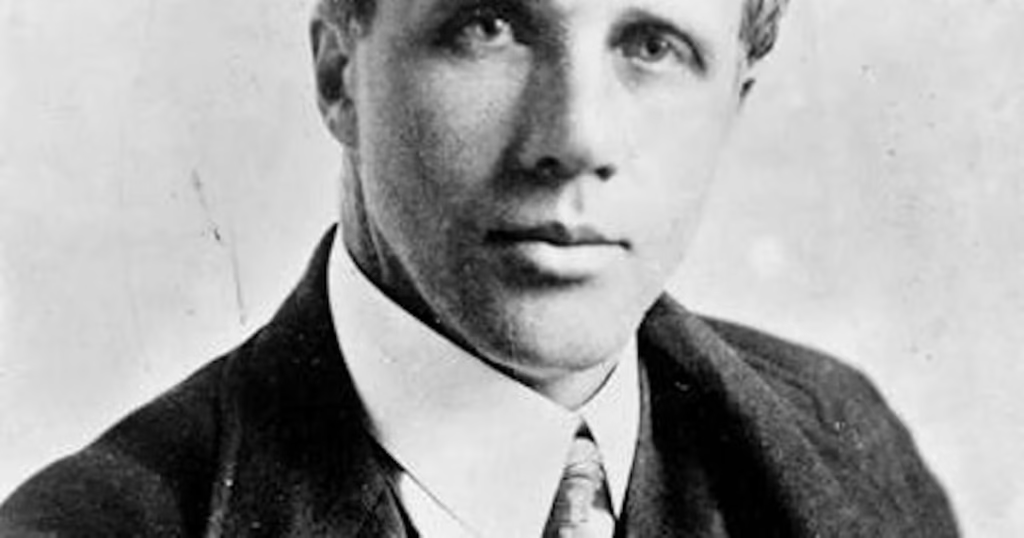
Robert Frost in his early years:
Robert Frost, one of the most celebrated American poets of the 20th century, captured the essence of rural life and the deep philosophical struggles of human existence with remarkable simplicity and depth. Known for his realistic depictions of New England landscapes and his contemplative themes, Frost’s poetry continues to resonate with readers worldwide.
Born on March 26, 1874, in San Francisco, California, Robert Lee Frost faced early hardship. His father, a journalist, died of tuberculosis when Frost was just 11 years old. After his father’s death, the family moved to Lawrence, Massachusetts, where Frost would grow up under the guidance of his mother and maternal grandparents.
Despite a rocky academic journey—attending but not graduating from Dartmouth College and Harvard University—Frost’s passion for poetry never waned. He worked a variety of jobs including teaching, working in a mill, and farming, all while writing poems that reflected the world around him.
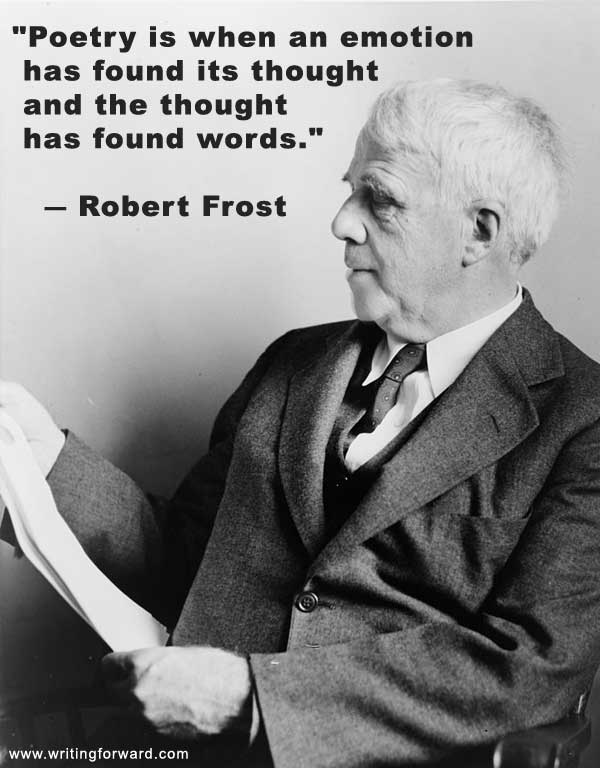
Frost in his mature years, captured in deep thought while writing
In 1895, Frost married Elinor Miriam White, his high school sweetheart. The couple shared a love of literature and had six children, though tragedy frequently visited their home—four of their children died young or faced serious mental health issues, and Elinor herself passed away in 1938. These personal losses deeply influenced Frost’s writing, adding layers of melancholy and philosophical reflection.
In 1912, frustrated by his lack of recognition in America, Frost moved with his family to England. This bold decision would change his life. While in England, he published his first two poetry collections: A Boy’s Will (1913) and North of Boston (1914). These works introduced readers to his masterful blend of colloquial language and formal structure. Poems like “Mending Wall”, “The Death of the Hired Man”, and “After Apple-Picking” showcased his gift for exploring everyday life through profound introspection.
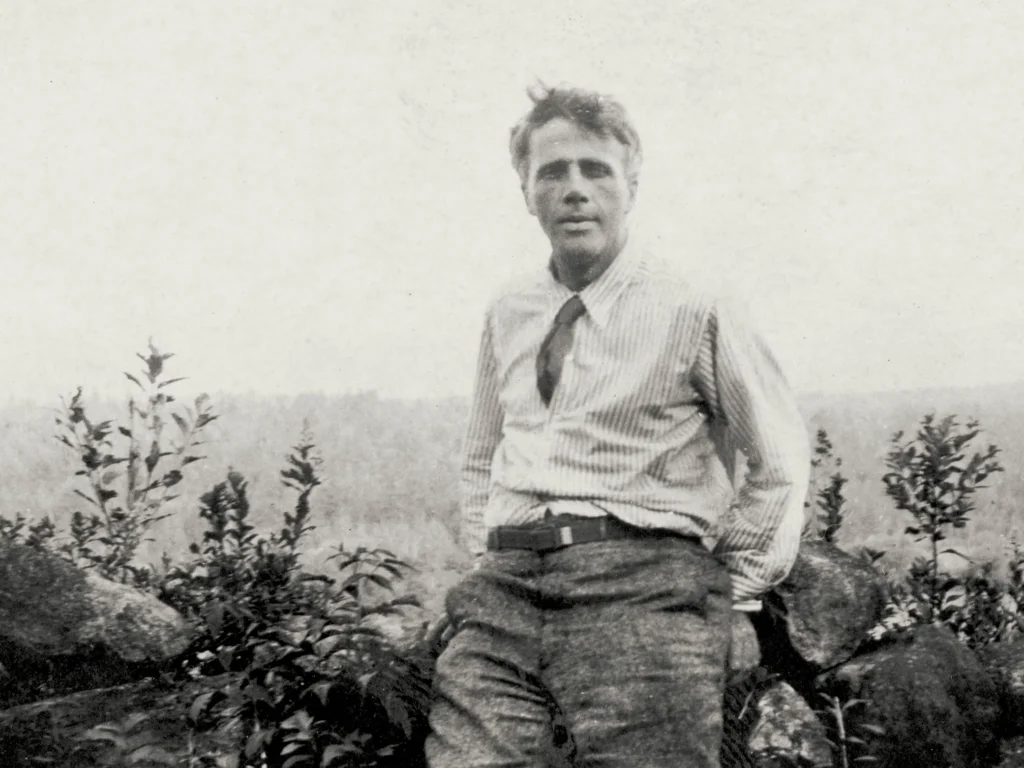
The iconic New England scenery that inspired much of Frost’s work
Returning to America in 1915, Frost quickly gained recognition and became a literary icon. He taught at various institutions, most notably Amherst College and later at the Bread Loaf School of English at Middlebury College in Vermont, where he mentored young poets and writers.
Throughout his career, Frost received numerous accolades. He was awarded the Pulitzer Prize for Poetry four times—more than any other poet in American history. Some of his most famous poems, such as “The Road Not Taken”, “Stopping by Woods on a Snowy Evening”, and “Fire and Ice”, are now considered timeless classics, often studied and quoted for their universal themes and emotional depth..
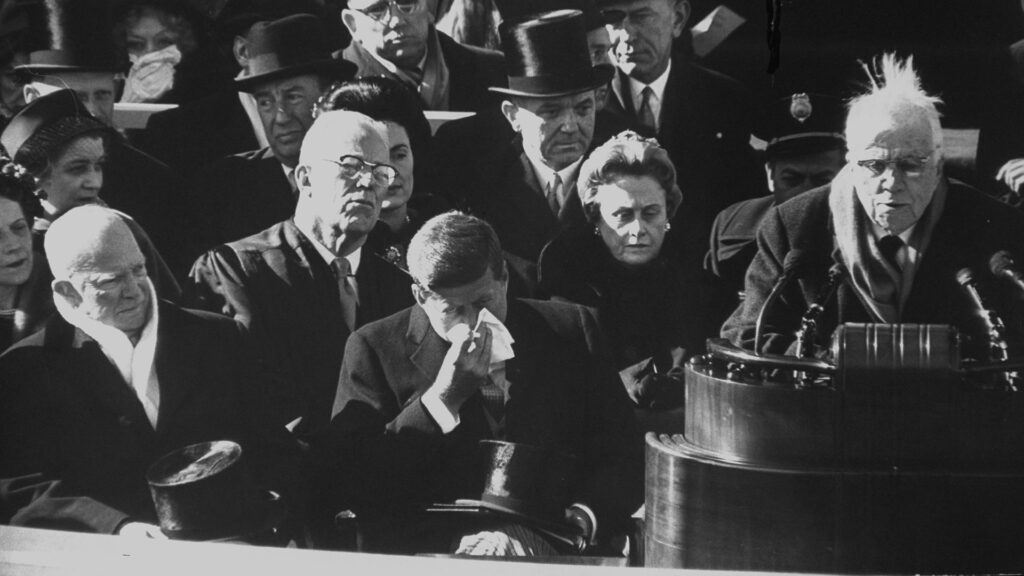
Robert Frost at President John F. Kennedy’s inauguration, 1961
In 1961, at the age of 86, Frost was honored as the first poet to recite at a U.S. presidential inauguration, reading at John F. Kennedy’s swearing-in ceremony. Although he was unable to read the new poem he wrote for the occasion due to glare from the snow, he recited “The Gift Outright” from memory, an emotional moment that symbolized his place in the American literary tradition.
Frost’s poetry often embraced paradoxes and hidden tensions. While his verses appear simple, many contain dark undertones and existential reflections. He once said, “I have never started a poem yet whose end I knew. Writing a poem is discovering.” This sense of exploration is what made his work so enduring.
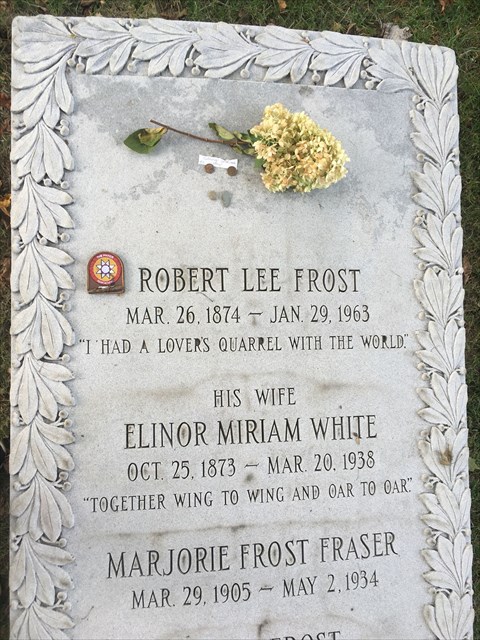
rost’s resting place in Bennington, Vermont
Robert Frost passed away on January 29, 1963, at the age of 88 in Boston, Massachusetts. He was buried in Old Bennington Cemetery in Vermont, near the landscapes he so dearly loved.
Even after his death, Robert Frost remains a guiding voice in American poetry. His legacy is not just in the awards and recognitions, but in the thousands of students, poets, and readers who continue to be inspired by his work. With a simple walk in the woods or a silent snowfall, Frost’s spirit lingers—inviting us to pause, reflect, and choose the road less traveled.
